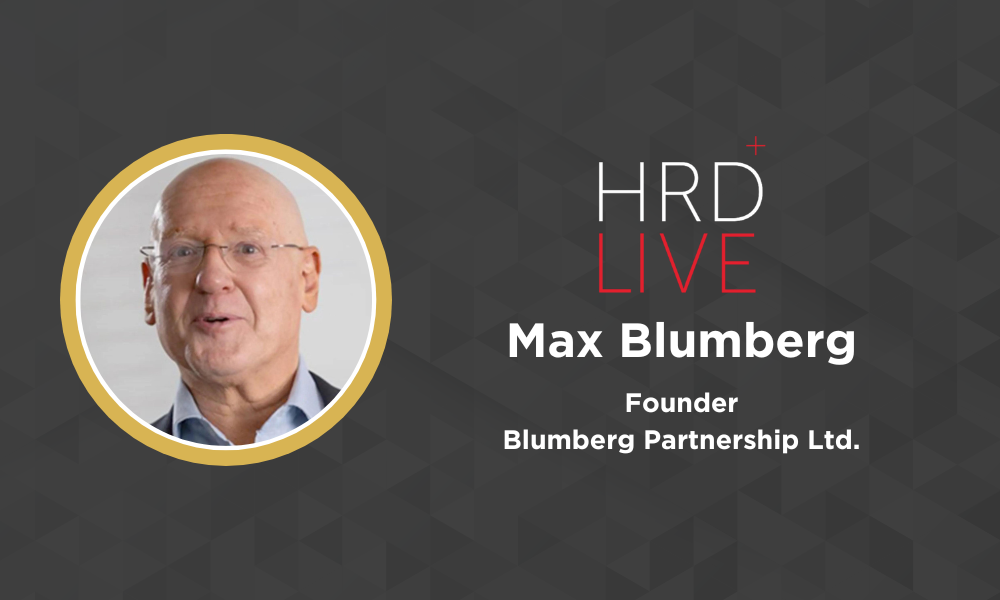Human Resource Management becomes Resource Management? Extending HR’s impact beyond people, processes, and policies
- 4 Min Read
Max Blumberg joins the HRD live podcast to discuss how the business-driven HR operating model can help HR leaders “make a clean break from old HR into a much brighter resource management future.”
- Author: Benjamin Broomfield
- Date published: Nov 15, 2023
- Categories

Podcast: Play in new window | Download Subscribe: RSS
The three Ps of human resource management: People, processes, and policies. Are they important? Yes. Do they help HR to improve the employee experience? Absolutely. But do they limit HR’s impact to administration rather than business strategy? See answers one and two.
HR leaders must wake up to some uncomfortable realities. Workforce shortages and lay-offs are becoming a new normal, and traditional operating models are leaving HR teams stuck in the weeds of administration. Max Blumberg, Founder of the Blumberg Partnership, argues this leaves HR leaders with three options:
- Redirect existing people and roles, and close competency gaps
- Increase headcount doing the work of delivering the capabilities.
- Redesign the entire HR organization and operating model from the ground up.
Blumberg joins the HRD Live podcast to discuss these options, including the limitations of options one and two. Ultimately, he recommends organizations execute option three by executing business-driven HR. This shift, he argues, will eventually see a systemic shift from ‘Human Resource Management’ to ‘Resource Management.’
A shift to resource management through business-driven HR
“HR really has to become more externally focused,” explains Blumberg. Executive teams, he argues, will gladly cut the budget to HR teams if they don’t transform.
He talks through the three options for transformation, and the limitations of closing competency gaps and increasing headcounts. “It costs money to upgrade people, and these are not small upgrades,” he says. Moreover, as HR expands its focus beyond human resource management to resource management, the task becomes more complex. “Should it be a human resource,” he considers, “An AI resource, an outsourced resource, or a gig resource?”
The third option, business-driven HR, is the most time and resource-intensive. But it is also the most worthwhile. By bringing just upgrading skills or bringing in external people, HR does not solve issues of silos. HR is still not connected to the business.
Instead, this new approach to resource management would finally see HR fix structural limitations. “You could get rid of the silos that we see,” explains Blumberg. “A new structure would help embed a strategic focus into HR…it’s a clean break from the old HR past into a much brighter resource management future.”
Tune into the HRD Live podcast to hear Blumberg break each option down in detail, discuss the shift to resource management, and outline how the business-driven HR model can help HR leaders achieve this transformation and finally become strategic partners to the business.
Timestamps
00:09 – Introduction
01:07 – Why do so many HR teams stall on people, processes, and policies, stopping short of meaningful deliverables?
02:50 – What are the options available to HR leaders whose teams are stuck in the weeds of procedure?
04:55 – How can HR leaders close competency gaps on their team and what common barriers block progress for this option?
07:31 – Why is Option 2, like Option 1, limited by its reliance on traditional HR operating models?
09:55 – Option 3, albeit the most rewarding, sounds like the most work: How can HR leaders get a roadmap in place for this option?
13:46 – Why do you see business-driven HR via option 3 as the only path forward to meaningful HR delivery?
______
Max Blumberg is the founder of the Blumberg Partnership where he is a seasoned People Analytics Consultant and Business Psychologist, helping ambitious professionals to develop their analytics, strategy, and leadership skills. He is a keen researcher and educator with roles as a Visiting Professor at the University of Leeds Business School and a Visiting Researcher at the Marshall School of Business at the University of Southern California and Goldsmiths, University of London. You can read about his work in books like The Power of People alongside Jonathan Ferrar, IBM, An Introduction to People Analytics alongside Dave Millner & Nadeem Khan, and Agile Workforce Planning with Adam Gibson. He is also a regular contributor to HRD Connect, often alongside Dave Millner, on the topic of their business-driven HR operating model.








